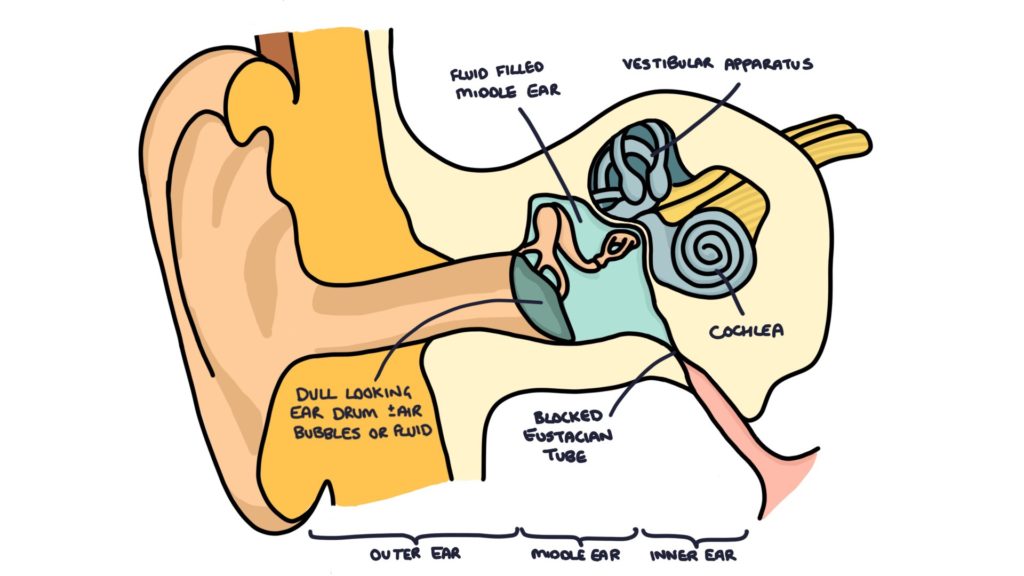Glue ear is also known as otitis media with effusion. The middle ear becomes full of fluid, causing a loss of hearing in that ear.
The Eustachian tube connects the middle ear to the back of the throat. It helps drain secretions from the middle ear. When it becomes blocked, this causes middle ear secretions (fluid) to build up in the middle ear space.

The main symptom of glue ear is a reduction in hearing in that ear. The main complication of glue ear is infection (otitis media).
Otoscopy can show a dull tympanic membrane with air bubbles or a visible fluid level, although it can look normal.
Management
Referral for audiometry to help establish the diagnosis and extent of hearing loss. Glue ear is usually treated conservatively, and resolves without treatment within 3 months. Children with co-morbidities affecting the structure of the ear, such as Down’s syndrome or cleft palate may require hearing aids or grommets.
Grommets
Grommets are tiny tubes inserted into the tympanic membrane by an ENT surgeon. This allows fluid from the middle ear to drain through the tympanic membrane to the ear canal. Usually grommets are inserted under general anaesthetic as a day case procedure. The procedure is relatively safe with few complications. Grommets usually fall out within a year, and only 1 in 3 patients require further grommets to be inserted for persistent glue ear.
Last updated January 2020
